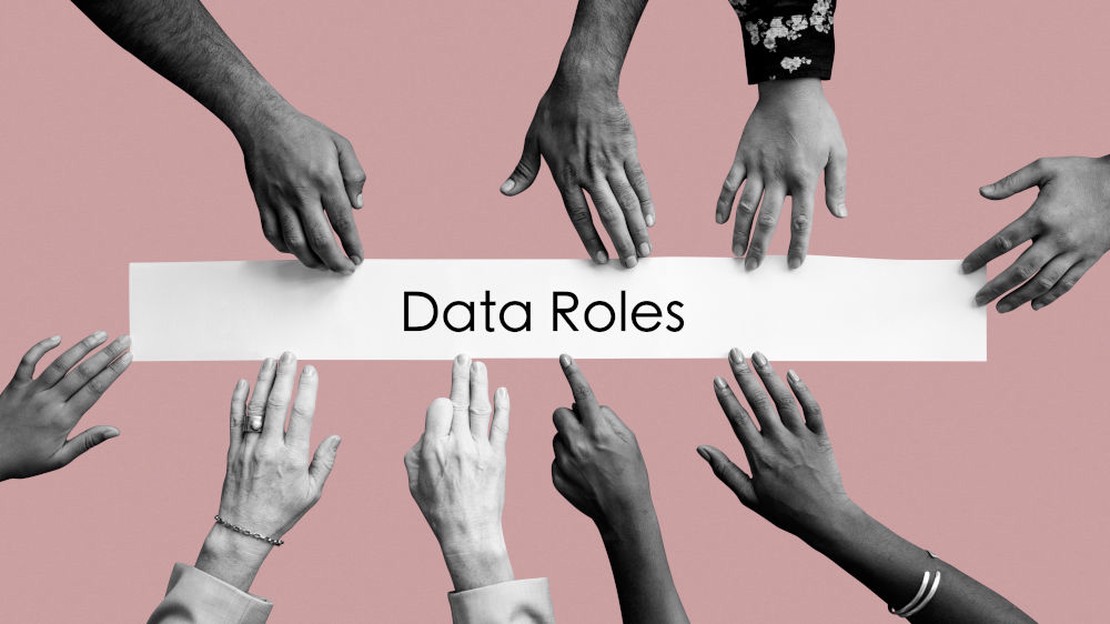
Archetypes of Data Roles
- Sepand Hani
- Data
- November 16, 2023
Understand the requirements
Finding the right fit for your goals can be challenging in the vast landscape of data roles. Aiming for a “good data person” won’t cut it because the data field isn’t a one-size-fits-all scenario. To make informed hiring decisions, start by defining your specific data needs.
Data requirements typically fall into three main categories: infrastructure, analysis, and science. By pinpointing the type of data work you want to undertake, you gain clarity on the skill sets necessary for success. Although there’s no universal template for data roles, most individuals in this field gravitate towards one of the three categories.
Archetypes
Let’s simplify these roles into infrastructure, analysis, and science archetypes. While there may be some overlap, this classification helps identify the types of skills needed for specific projects.
It’s crucial to note that these archetypes are generalizations, and your company’s unique needs may require individuals who don’t neatly fit into one category. By leveraging these archetypes and associated skill sets, you can effectively communicate the roles you’re seeking to fill and assemble the right team for your data objectives.
Data Engineers
In the intricate landscape of organizational data, Data Engineers emerge as the unsung heroes, spearheading the charge for data enablement. They form the bedrock of the data function, ensuring the seamless flow of consistent, accurate, and reliable data to stakeholders. Operating behind the scenes, they construct and manage platforms that facilitate the smooth transformation and movement of data, even supporting real-time modeling for machine learning.
Key Responsibilities of Data Engineers
-
Data Extraction and Aggregation:
- Channeling diverse data into a unified repository.
-
Data Transformation:
- Crafting raw datasets into standardized tables.
-
Data Quality Vigilance:
- Constant monitoring to uphold data quality.
-
Privacy and Security Guardians:
- Ensuring robust data privacy and security measures.
-
Machine Learning Infrastructure Architects:
- Building and maintaining the infrastructure for real-time machine learning.
Critical Skills
-
Coding Proficiency:
-
ETL Expertise:
- Deep understanding of Extract, Transform, and Load (ETL) processes.
Essential Soft Skills
-
Collaboration Maestro:
- Effective collaboration with both technical and non-technical teams.
-
Detail Vigilante:
- Meticulous attention to detail to identify and rectify data inconsistencies proactively.
Collaboration Needs
-
Business Insight Integration:
- Collaborating with roles embedded in the business context for insights into data requirements.
-
Enhancing Data Roles:
- Empowering Data Analysts and Scientists to enhance their efficiency.
-
Implementation Precision:
- Implementing, testing, and logging data accurately with engineering precision.
Common Pitfalls With Data Engineering Teams
-
Business Context Void:
- Operating in isolation from the broader business context hampers understanding and meeting specific data or platform requirements.
-
Pipeline Neglect:
- Failing to consistently maintain data pipelines can disrupt availability, quality, and reliability as the organization scales.
-
Collaboration Gaps:
- Lack of collaboration with other data roles and engineering teams hinders overall effectiveness.
-
Privacy and Security Oversight:
- Prioritizing and maintaining data privacy and security is crucial to mitigate risks and uphold stakeholder trust.
-
Detail Blindness:
- Meticulous observation is key; overlooking minor inconsistencies can lead to significant data problems.
-
Coding Skills Canyon:
- Staying proficient in coding languages is necessary; a skills gap can hinder effective performance.
-
ETL Neglect:
- Adhering to best practices in ETL processes is paramount; neglecting these practices compromises efficiency and reliability.
Data Analyst
Unveiling Insights as a Data Analyst
A Data Analyst’s role in data is to decipher information, unveiling opportunities that empower teams to make informed decisions. Collaborating with business stakeholders, these analysts delve into the business’s questions and challenges. Their mission is to analyze, measure, and relay insightful findings to drive meaningful outcomes.
Key Responsibilities:
-
Measuring Business Metrics:
- Gauge essential business metrics to inform decision-making.
-
Transparency in Metrics:
- Make metrics accessible across the organization, fostering a data-driven culture.
-
Exploring Opportunities:
- Identify and recommend areas of opportunity for business improvement.
-
Storytelling for Decision-Making:
- Craft compelling narratives to help the organization harness the power of data in decision-making.
-
Impactful Experimentation:
- Conduct experiments to measure the impact of different approaches.
Essential Skills:
-
Coding Proficiency:
- Use coding skills to extract and analyze data, particularly in SQL.
-
Data Visualization:
- Demonstrate the ability to present data meaningfully through charts, graphs, and narratives.
Key Soft Skills:
-
Effective Communication:
- Understand the business context for identifying pertinent questions and issues, fostering holistic data-driven solutions.
-
Curiosity in Data Exploration:
- Pose the right questions to explore data comprehensively, beyond immediate business queries.
-
Storytelling Acumen:
- Construct data stories to enhance stakeholder understanding and facilitate better decision-making.
Collaboration:
-
Business Stakeholders Engagement:
- Cultivate strong relationships with business partners to gain contextual insights and align data efforts with business goals.
-
Collaboration with Data Engineers:
- Work closely with Data Engineering to ensure data availability and usability.
-
Engagement with Data Scientists:
- Provide valuable insights to Data Scientists, identifying potential areas of opportunity.
Avoiding Common Pitfalls:
-
Data Quality Assumptions:
- Challenge assumptions about data quality to ensure accurate analyses.
-
Strategic Questioning:
- Prioritize evaluating the relevance of questions rather than solely answering them.
In essence, a Data Analyst’s prowess lies in decoding data and constructing a narrative that transforms raw information into a catalyst for informed decision-making.
The Power of Data: The Role of a Data Scientist
Data Scientists are the wizards of the digital age, weaving intricate data products that breathe life into decision-making processes. Their expertise extends to statistics, causal inference, propelling experimentation, and impact measurement.
Responsibilities
- Predictive Modeling: Crafting models to foresee business outcomes.
- Automated Decision-Making: Building products that seamlessly automate decision processes.
- Impact Assessment: Estimating effects through experimentation and causal inference.
Hard Skills
-
Coding Prowess: Navigating vast datasets demands SQL proficiency. Fluency in scripting languages like Python or R is essential for data manipulation and modeling.
-
Algorithms & Modeling: Mastering supervised and unsupervised machine learning, including regression, tree-based models, and neural networks.
-
Statistical Proficiency: Applying statistical concepts for insightful data analysis and informed decision-making.
Soft Skills
-
Communication Mastery: Translating complex data science jargon into understandable language for non-technical stakeholders.
-
Business Acumen: Aligning efforts with business goals ensures impactful solutions, not just cutting-edge experiments.
-
Prioritization Skills: Strategic allocation of time to projects with the highest potential for impact.
Collaborators
-
Data Analysts: Collaborating with data analysts to identify opportunities and tackle problems effectively.
-
Data Engineers: Working closely to ensure seamless data accessibility and model productionization.
-
Business Stakeholders: Bridging the gap between technical solutions and business needs, fostering holistic problem-solving.
Common Pitfalls
-
Overcomplicating Solutions: Avoid applying overly complex solutions to straightforward problems.
-
Lack of Business Context: Ensuring a deep understanding of business context to build solutions that enhance business outcomes.
-
Model Launch Without Guardrails: Implementing models responsibly, with necessary safeguards to prevent unintended consequences.
Embark on the journey of data-driven decision-making with a Data Scientist, where precision meets business impact.
Image by rawpixel.com


